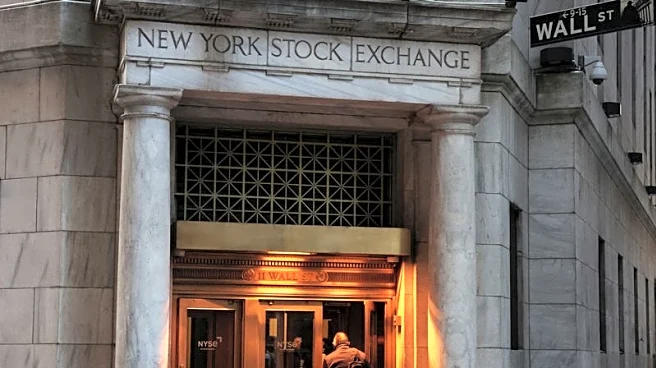What's Happening?
Recent economic data has led to a reassessment of the Federal Reserve's monetary policy trajectory. The U.S. economy grew at a revised annual rate of 3.8% in the second quarter, driven by consumer spending and reduced imports. This stronger-than-expected growth has raised concerns that the Fed may be more cautious in cutting interest rates further. U.S. Treasury yields rose, and stock markets experienced declines as investors adjusted their expectations. Fed officials, including Chicago Fed President Austan Goolsbee, have expressed reservations about aggressive rate cuts due to inflation concerns.
Why It's Important?
The economic data and Fed's cautious stance have significant implications for financial markets and the broader economy. Higher Treasury yields can increase borrowing costs, affecting consumer spending and business investment. The stock market's sensitivity to Fed policy highlights the interconnectedness of monetary policy and market performance. The Fed's decisions will be crucial in shaping economic growth and inflation trends, impacting various stakeholders, including businesses, consumers, and investors.
What's Next?
Investors are closely watching upcoming economic indicators and Fed communications for insights into future policy moves. The potential for a government shutdown adds uncertainty, as it could disrupt data releases and complicate the economic outlook. The Fed's approach to balancing growth and inflation will be critical in determining the trajectory of interest rates and market sentiment.











